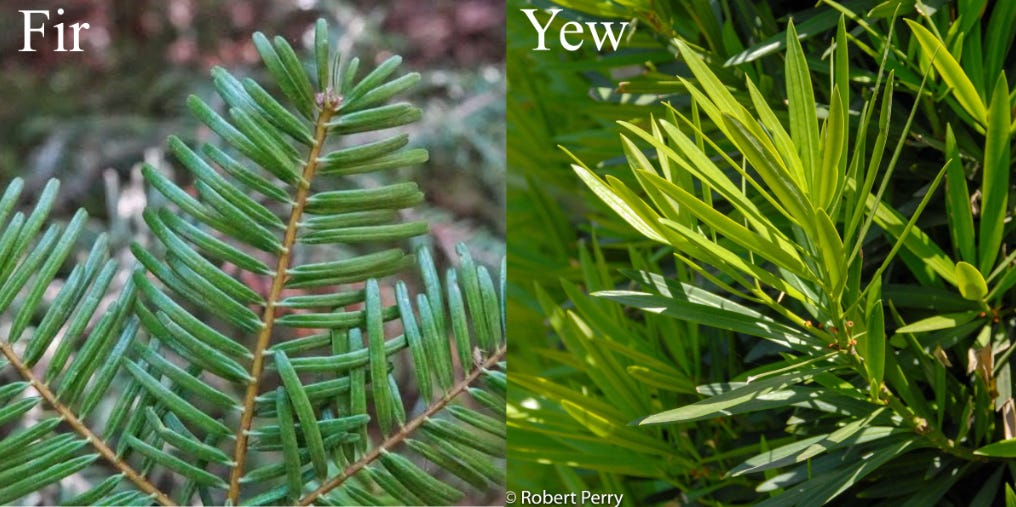Boost Testosterone And Defy Aging With Pine Needle Tea
The effects of pine needle tea and pine pollen have amazing and long lasting effects on the body.
Winter is approaching, and as the leaves begin to fall, the stoic allure of conifers truly begins to shine through. But these evergreen beauties make for more than just a Christmas tree.
For thousands of years, eastern countries such as Russia, China, and Japan have been stewing pine needles in hot water and drinking the resulting tea. It was also drank by American Indians, who later aided French explorer Jacques Cartier and his men by giving them this recipe, allowing them to fight the scurvy that was killing them off.
And even if we don’t suffer from scurvy, most of us are not getting adequate vitamin C in our diets. This can lead to increased rates of sickness, worse quality skin and hair, achy joints, and fatigue.
Luckily, a single cup of pine needle tea has five times the vitamin C content of a lemon. In addition, it is also high in vitamin A, which helps keep your eyes, heart, and lungs healthy. Calcium and magnesium are also found in large quantities within pine needles.
There may also be special benefits to both men and women who consume this mild yet delicious brew.
Anecdotally, drinking pine needle tea or consuming the raw pollen off the male pine cones has shown to boost testosterone levels. This could be a safe and affordable way to ward off the degenerative effects of aging associated with lowering T levels, or just provide that extra boost of machismo you’ve been looking for.
And on the female side, drinking pine needle tea has been shown to reduce the intensity of menstrual cramps.
But we aren’t done there. In China, where pine needle tea has been commonplace since Antiquity, pine needle tea has been believed to slow the process of aging. And in 2021, they were able to prove it.
Now that we know the amazing health benefits of pine needle tea, how do you go about making it? Luckily, the process is very simple.
After finding a pine tree, gather the needles furthest on the branch. All you have to do is pull them at the base and they will pop off. Next you should chop off the sheaths (the brown part) and then roughly chop them.
You may also choose to bruise the needles a bit to extract more of the juices.
Steep the needles in hot water for 15 minutes and then strain before drinking. I would advise getting your water to a boil and then pouring it over the needles, as opposed to boiling the needles for the entire duration. Excessive heat exposure will break down the vitamin C content, and a lot of the immune system benefits will be lost.
The result will be a tea that is light in color and mild in flavor, but tasty and incredibly nutritious.
Now, the keen reader might have noticed that I slipped in a mention of pine pollen earlier, when the rest of this article has been about tea. During the spring months, you can harvest pollen directly from the pine cones and consume it plain. You could also mix it into yogurt, milk, or tea.
The testosterone boosting effects of pine pollen seem to carry over, but a major difference between the pollen and needles lies in their vitamin content. While the needles contain large amounts of vitamins A and C, the pollen is much higher in vitamins B and E. Though both the pollen and needles are rich in calcium and magnesium.
It should be noted that pine pollen can only be extracted from male pine cones. What you typically think of as a pine cone is the female version. Pictured below is a male pine cone. To see if it is ready to release pollen, simply tap it, and see if pollen puffs out.
To harvest the pollen, pull off the pine cones and collect into a bowl or jar. Roughly shake until all of the pollen falls out, and then sift into a separate container.
Now that we know all of the wonderful health and longevity properties of pine needles and pollen, it is important to go over how to identify pine trees in contrast to their cousins: the spruce and fir.
While there are plenty of edible spruce and fir needles, many with their own benefits, for the sake of safety we are going to keep this exclusively about pines. Because while most pine needles are safe to consume, there are three species that are not.
Those three being: Norfolk Island pine, Ponderosa pine, and Yew. And these trees (with the exception of Ponderosa) look more similar to spruce or fir, as opposed to say a White pine.
Yew trees have flat needles, so I would suggest staying away from anything with flat needles unless you really know your trees.
Norfolk Island pine has needles much more similar in appearance to spruce trees than most other pines. It too should be avoided.
As for Ponderosa pine, it looks much more similar to other pine trees. It grows across the western half of North America, so if you live in that region, I would recommend avoiding pine trees with bundles of three needles.
And on the topic of bundles, that leads us into how to identify an actual pine tree. True pine trees have a sheath at the base of their needles, and each sheath will contain either 2, 3, or 5 needles within it. The needles of a pine tree will be long and soft. This contrasts to the needles of spruce and fir, which are short and hard/spiky.
I hope you learned a lot and are excited to try your first cup of pine needle tea. If you enjoyed this article and are hungry for more, you can follow me across the web here:








